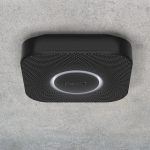Clean Green
A green kitchen from top to bottom cabinets to floors. You want to keep your home spick-and-span, but you don’t want your cleaning products to be toxic to people, pets, or the environment. By carefully selecting the cleaning products you use, you can free yourself from harsh chemicals and still keep a beautiful, sparkling home.
Begin by checking the stock of cleaning fluids and sprays in your cabinets. By reading the labels you may find a surprising level of toxicity in the ingredients. Replace those harsh chemical cleaners with products that are free of additional scents and are natural cleaners.
Many stores sell natural cleansers, but it’s easy and more economical to make your own. Stock up on baking soda because it is one the cheapest, gentlest and most effective of cleansers. Baking Soda will make your sinks, faucets and counter tops shine. If you need something a little more acidic to clean a tough stain, try lemon juice.
Essential oils are another great natural cleaning product. Most are derived from plants and they smell wonderful but the scent can be quite strong so it may need to be diluted for use. Eucalyptus, lavender, peppermint and citrus oils make particularly good kitchen cleansers. There are many simple ways to use these oils when mopping floors, disinfecting counters or eliminating unpleasant odors.
Green Produce
When you buy organic produce you know the fruits and vegetables are free from the residues that can remain with pesticides. Typically, peaches, lettuce, apples and grapes are more heavily sprayed than other foodstuffs. Even when fruits and vegetables are certified as “natural,” they should be thoroughly washed before they are eaten. Locally grown produce will need to be washed a bit less and will usually be fresher and a bit more nutritious.
When you wash your produce, don’t use detergent. Just use cold water, preferably distilled. Vegetables that are leafy or have crevices, like broccoli, should be allowed to soak for a couple of minutes before you rinse and cut them.
Reduce Energy Use
The easiest way to save money and respect the environment is to turn off your kitchen lights when no one is in the room. If you’re currently using standard light bulbs in your fixtures, consider converting to more energy-saving bulbs like CFLs (compact fluorescent light bulbs).
You can also lower your refrigerator’s energy output. Keep your fridge stocked but not overly full. Make sure the foods are stored in airtight containers. Defrost your freezer regularly and dust the coils behind the fridge to promote air circulation. You may also want to avoid having your refrigerator right next to the oven. This will reduce the amount of work it will need to do to keep things cool.
Additional Tips for a Green Kitchen
Appliances that have high ratings for energy efficiency will also reduce your environmental footprint. When you replace or add a new refrigerator, freezer, stove, dishwasher, trash compactor, disposal, ceiling fan, or other kitchen appliance, compare the efficiency ratings. Be sure to do regular upkeep on your appliances so that they do not waste energy. Schedule professional repairs promptly when they are necessary. To protect yourself from additional inconvenience, unexpected expenses, and assure you that your appliances have received quality servicing, consider getting a home warranty protection plan. American Home Shield can help.




